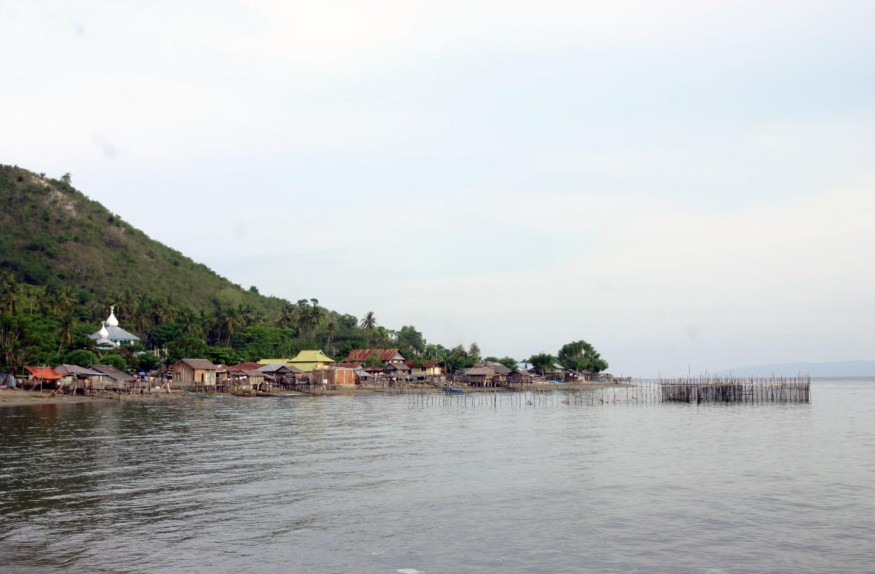Although they are not always possible, green buffers such as mangroves are often better for defending coastal populations than physical defenses like sea walls.
Scientists cautioned in a critical UN report released this week that using seawalls to fight against sea level rise and storm surges can be counterproductive.
The newest report from the Intergovernmental Panel on Climate Change emphasizes "maladaptation," which occurs when adaptation strategies to climate change consequences cause more issues than they address.
While seawalls protect coastal houses and beaches, they are costly, cause environmental harm, primarily benefit the wealthy, and encourage dangerous construction along the ocean.
Green Buffers Effectivity

According to experts worldwide, Green buffers such as mangroves are typically a better means of dealing with sea level rise than complex infrastructures such as seawalls and levees, albeit they are not ideal for every region.
Hard engineering structures, such as seawalls, have traditionally been the dominant strategy to coastal hazard mitigation, according to Melanie Bishop, an associate professor of marine ecology at Australia's Macquarie University.
While these buildings have preserved coastal assets from erosion and inundation in many cases, they have come at a high cost - both financially, environmentally, and socially.
"Seawalls lessen damage to people and assets in the short term but can result in lock-ins and increase vulnerability to climate hazards in the long run," according to a near-final version of the study summary viewed by Climate Home News, which scientists authored.
Criticisms Against Use of Seawalls
This criticism was muted once government representatives spoke at the approving plenary and emphasized the benefits of seawalls. The word "effectively" was inserted before "decrease" in the final version, as was the disclaimer "unless they are integrated into a long-term adaptive plan."
The report stated that seawalls are "inflexible and/or costly to alter."
According to two people familiar with the discussions, European nations emphasized the merits of natural-based solutions.
Seawall Costs
The costs of seawalls have spurred global discussions over what should be preserved and who should pay for it.
Companies like Google and Facebook have spent billions of dollars on San Francisco Bay in California. The region is subject to flooding due to rising sea levels during a storm surge.
Facebook will pay $7.8 million for the levee, while East Palo Alto, a low-income town nearby, will provide $5.5 million, or 13% of its yearly budget.
Mark Lubell is a University of California environmental science professor. "There are questions of equality and environmental justice," he told Climate Home. Seawalls are costly. Impoverished communities of color find it more challenging to purchase them, and poor areas in the Bay Area (and much of the globe) are more exposed to sea level rise."
Seawalls in Underdeveloped in Countries
Seawalls are less frequent in underdeveloped countries due to their high cost. According to Anoka Abeyratne, director of Sri Lankan environmental consultant Aayusha Global, most of Sri Lanka's seawalls are "not the sort of large-scale ones employed in the US."
"Most are primitive, with mere pebbles bound together with wire mesh," she continued. These are used to keep sandy beaches from being washed away."
The whole 3,675-page report is not subject to line-by-line clearance from governments, unlike the 36-page summary for policymakers.
It emphasizes seawalls' ecological and economic costs, claiming that they "limit the area available for coastal ecosystems."
Beach walls can prevent creatures such as turtles from accessing certain beach areas. According to the Sea Turtle Conservancy, turtles are driven to lay eggs closer to the ocean, where their eggs are more likely to be swept out to sea.
Cheaper Solution

Mangroves, for example, are a less expensive and more environmentally friendly approach to preventing storm surges since they absorb carbon and offer a home for species. Planting mangroves, however, is not always viable, especially in metropolitan areas.
It is also possible to take a break from the sea. According to the study, the Fijian coastal hamlet of Vunidogoloa migrated to another place inside their traditional territory.
However, the research cautions that while the availability of customary land for the new site was a crucial component in this relocation's success, this does not ensure success in all cases since displacement may expose communities to new threats.
Smith Warner International employs David Smith, a Jamaican coastal engineer. He told Climate Home that there is nowhere to go for the many Caribbean and other tiny islands.
He claims that Barbados' businesses and residences are located around the shore. "Once you go into the highlands, you're dealing with landslides and far more severe building circumstances," he continued.
Combining Green and Grey
Many engineers, according to Smith, are considering combining green and grey infrastructure, such as a barrier with a mangrove belt in front of it.
In the Marshall Islands, the Ebeye community has even less chance to flee than Barbados.
Ebeye is a 300-meter-wide strip of land with the Pacific Ocean on both sides. The Green Climate Fund will contribute $25 million to constructing a 1.5-kilometer-long barrier that will cost $60 million.
The Marshall Islands ambassador to Fiji and the Pacific Islands, Albon Ishoda, told Climate Home that while the IPCC report expressed reasonable criticisms of seawalls, many atoll villages had no other alternatives.
Related Article : How Climate Misinformation Through Social Media Worsens the Battle Against Climate Change
For more news about similar news, don't forget to follow Nature World News!
© 2025 NatureWorldNews.com All rights reserved. Do not reproduce without permission.





